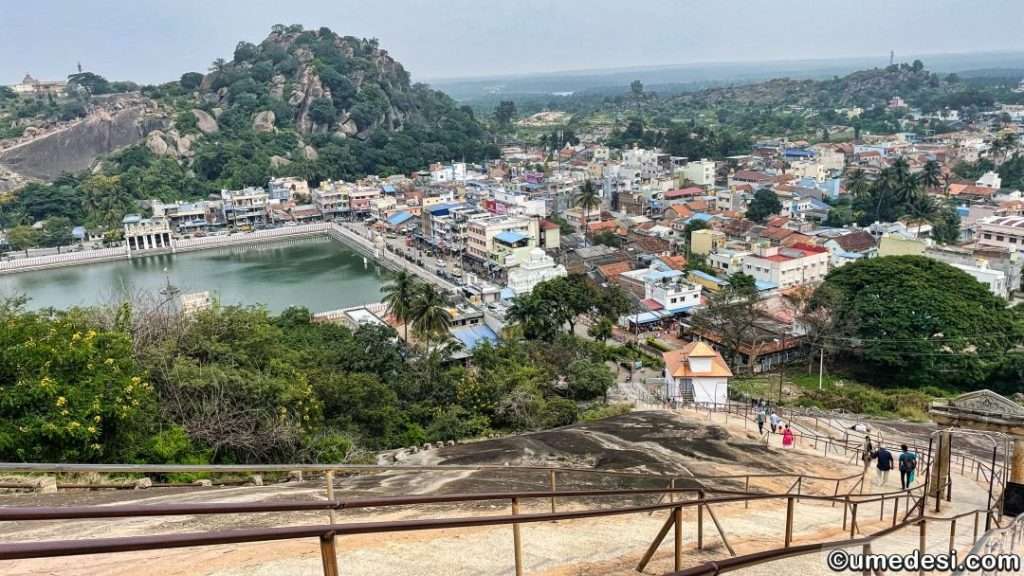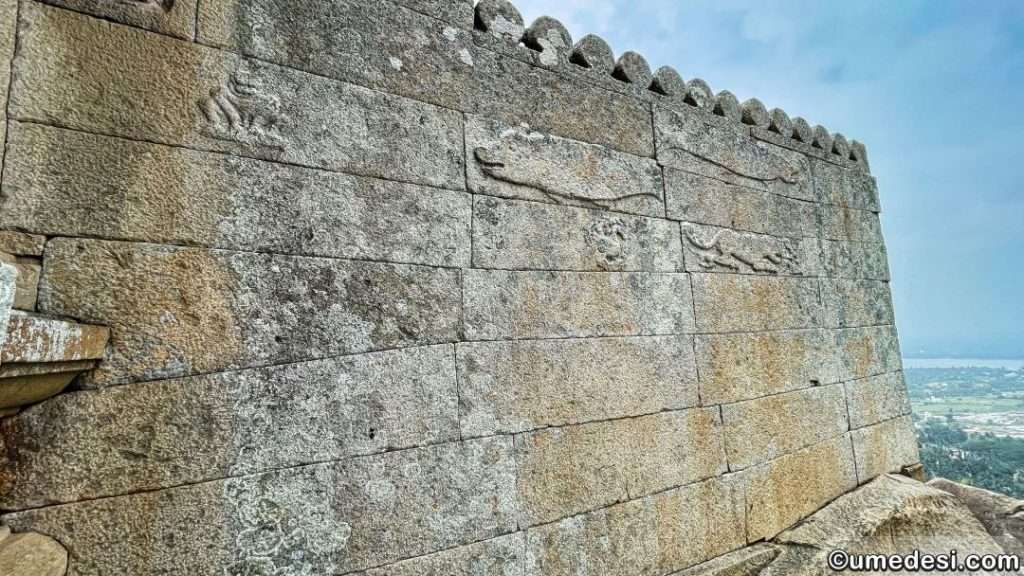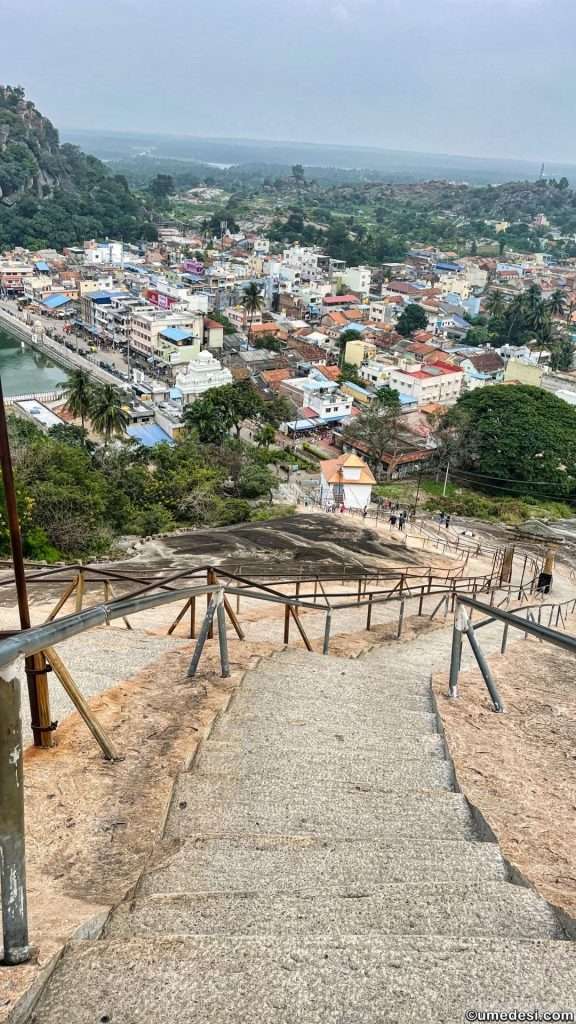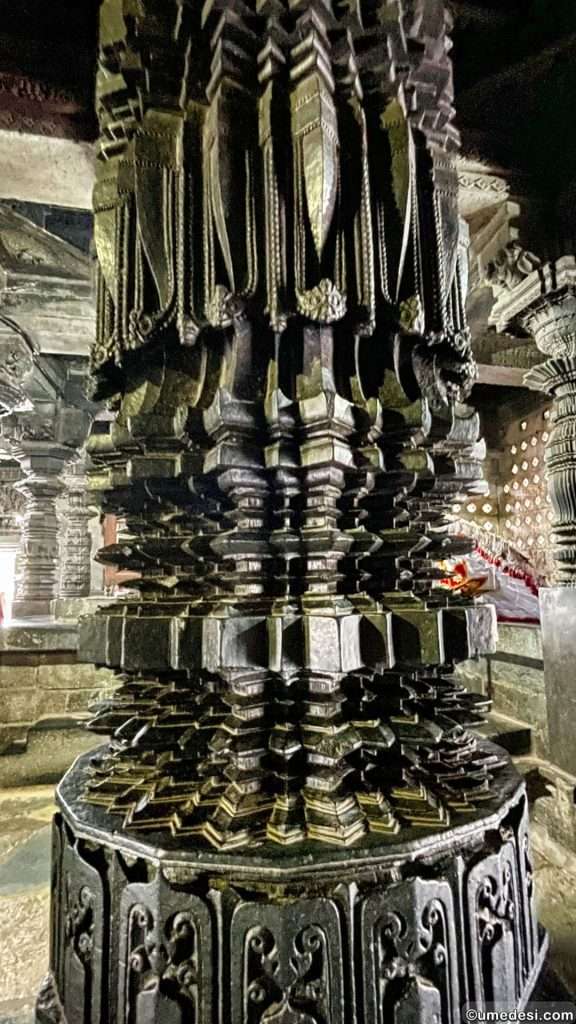By Desis, for Desis and Everyone Else!!
What’s a Desi?
The term “desi” is a term that is commonly used by people from the Indian subcontinent to refer to themselves or other people (origin or ancestry) from the region.
The word “Desi” is derived from the Sanskrit word “desh,” which means “country” or “region” or “homeland”. (‘Sanskrit’ word ‘Desh’? What is Sanskrit?)
Did you ever wonder:
What is Indian culture like? Learn more!
Interesting facts about India you didn’t know about!
Explore Indian customs.
Traveling to India? You are in for a treat – Explore here!
Here are a few articles from this site – use the menu at the very top of this page to discover many more…
Desi people can come from countries such as India, Pakistan, Bangladesh, Nepal, Sri Lanka, Bhutan, and Maldives. The term can also be used to describe aspects of Indian origin culture, including food, clothing, music, and art.
What is Pana Sankranti?
What is Pana Sankranti?
The Oriya or Odia New Year is called “Pana Sankranti” or “Maha Vishuba Sankranti” and it is celebrated on April 14th every year. Pana Sankranti is a major festival in the state of Odisha, India, and is celebrated with great enthusiasm and joy. The language spoken is Odia or Oriya.
This day is also known as “Mesha Sankranti” and it marks the beginning of the solar year in the traditional Hindu calendar.
The festival is marked by various rituals and customs, including the preparation and consumption of a traditional drink called “Pana,” which is made of various ingredients like yogurt, milk, and jaggery.
The festival also involves offering prayers to Lord Jagannath, the presiding deity of the state, and seeking his blessings for a prosperous and happy new year.
The official language of Odisha is Odia, also known as Oriya. It is a language spoken by the people of the state of Odisha and also by people in neighboring areas like West Bengal, Jharkhand, and Chhattisgarh.
Happy Pana Sankranti in Odia script is:
ପଣା ସଂକ୍ରାନ୍ତି ର ଶୁଭେଚ୍ଛାରେ ଜୟ ଜଗନ୍ନାଥ ।
English transliteration: “Pana Sankranti ra shubhechha re jai Jagannath!”
Why is Pana Sankranti celebrated?
The festival of Pana Sankranti or Maha Vishuba Sankranti is of great religious and cultural significance for the people of Odisha. It is a time to celebrate the start of a new year and to seek blessings for a prosperous and successful year ahead.
The festival is also associated with the worship of Lord Jagannath, who is the presiding deity of Odisha and is considered to be an embodiment of Lord Vishnu.
In addition to its religious significance, Pana Sankranti is also linked to the agricultural cycle of the region. The festival marks the onset of the harvest season and is a time when farmers start preparing their fields for the upcoming crop.
The Pana drink that is prepared and consumed during the festival is believed to be a tonic that provides strength and energy to the farmers as they begin their work in the fields.
The festival also has cultural significance as it is a time when people come together to celebrate and enjoy various cultural events like music, dance, and traditional sports. The festival provides an opportunity for people to showcase their cultural heritage and to renew their bonds of friendship and community.
Who is Lord Jagannath?
Lord Jagannath is a major deity worshiped in the state of Odisha, India, and is the presiding deity of the famous Jagannath Temple located in the city of Puri. The word “Jagannath” means “Lord of the Universe” and is a Sanskrit term that is often used to refer to Lord Vishnu, one of the principal deities of the Hindu religion.
The Jagannath Temple in Puri is one of the most famous and revered temples in India and is considered to be one of the Char Dham pilgrimage sites for Hindus.
The temple is believed to have been built in the 12th century and is famous for its imposing architecture and intricate carvings. The temple complex also includes several other structures, such as the Pancha Tirtha, a collection of five sacred bathing spots, and the Ananda Bazar, a market area that sells offerings and souvenirs to pilgrims.

One of the most famous stories associated with Lord Jagannath is the tale of his origin. According to the legend, Lord Jagannath, along with his brother Balabhadra and sister Subhadra, was originally worshiped as a wooden idol in a temple in the ancient city of Mathura. The idols were later taken to Puri by King Indradyumna, who was instructed to do so in a dream by Lord Vishnu himself.

Another famous story associated with the Jagannath Temple is the annual Rath Yatra, or Chariot Festival, which is held in Puri every year.
The festival involves the procession of the three deities from the Jagannath Temple to the Gundicha Temple, which is located about three kilometers away. The idols are placed on three massive wooden chariots and are pulled by thousands of devotees through the streets of Puri. The festival is a major tourist attraction and is considered to be one of the largest religious gatherings in the world.
The Juggernaut?
The word “Juggernaut,” it is often used to refer to a powerful force that is difficult to stop or control.
The term is originated from the name “Jagannath,” which was applied to the wooden idol of Lord Jagannath that was originally worshiped in the temple at Mathura.
The term was later used to describe the massive wooden chariots used in the Rath Yatra festival, which were believed to be almost impossible to stop once they began moving.
Over time, the term “Juggernaut” came to be used in a more general sense to describe any powerful force that was difficult to resist.
What special dishes are made for this festival?
Pana Sankranti is an important festival in the state of Odisha, and it is celebrated with great enthusiasm and joy. During this festival, several traditional dishes are prepared, and people enjoy feasting together. Here are a few popular dishes that are prepared during Pana Sankranti, along with their recipes:
Pana (Panaka) Drink:
This is a traditional drink that is prepared using a combination of yogurt, jaggery, water, and other flavorings. It is a refreshing and energizing drink that is commonly consumed during the festival.
Ingredients:
1 cup yogurt
1/2 cup jaggery, grated or powdered
2 cups water
1/2 tsp roasted cumin powder
1/2 tsp black salt
1/4 tsp ginger powder
1/4 tsp cardamom powder
Mint leaves, for garnish
Ice cubesInstructions:
In a mixing bowl, whisk the yogurt until it becomes smooth.
Add the jaggery and whisk again until the jaggery dissolves.
Add the water, roasted cumin powder, black salt, ginger powder, and cardamom powder, and mix well.
Chill the drink in the refrigerator for 30 minutes to 1 hour.
Add ice cubes to the glasses and pour the chilled Pana drink into them.
Garnish with mint leaves and serve.Pakhala:

Pakhala is a traditional dish made by soaking rice in water overnight and then seasoning it with a variety of spices and herbs. It is a staple food in Odisha, and is commonly consumed during the summer months
Ingredients:
2 cups cooked rice
4 cups water
1/2 cup curd
1/2 tsp cumin seeds
1/2 tsp mustard seeds
1/2 tsp fenugreek seeds
1 dried red chili
1/4 tsp asafoetida
Salt, to taste
Coriander leaves, for garnishInstructions:
In a large bowl, combine the cooked rice and water and mix well. Cover the bowl and let it sit at room temperature for 6-8 hours or overnight.
Once the rice has soaked for a sufficient amount of time, add the curd and mix well.
In a pan, heat some oil and add the cumin seeds, mustard seeds, fenugreek seeds, and dried red chili. Fry until the mustard seeds start to pop.
Add the asafoetida and fry for a few seconds.
Add the seasoning to the rice mixture and mix well.
Add salt to taste and mix again.
Garnish with coriander leaves and serve.In addition to these dishes, people also prepare a variety of other traditional dishes like dalma, ambil, khiri, and manda pitha during Pana Sankranti.
Ambil:
Ambil is a traditional drink made with rice flour and yogurt. It is a cooling drink that is perfect for the hot summer months.
Ingredients:
1/2 cup rice flour
2 cups water
1 cup yogurt
1 tsp cumin seeds
1 tsp mustard seeds
1 dried red chili
1/4 tsp asafoetida
Salt, to taste
Coriander leaves, for garnishInstructions:
In a mixing bowl, whisk the rice flour and water together until there are no lumps.
In a pan, heat some oil and add the cumin seeds, mustard seeds, and dried red chili. Fry until the mustard seeds start to pop.
Add the asafoetida and fry for a few seconds.
Add the rice flour mixture to the pan and stir well.
Add salt to taste and mix well.
Let the mixture simmer for 5-10 minutes until it thickens.
In a separate bowl, whisk the yogurt until it becomes smooth.
Add the thickened rice flour mixture to the yogurt and mix well.
Add some water if needed to achieve the desired consistency.
Garnish with coriander leaves and serve chilled.Khiri:
Khiri is a traditional rice pudding that is made using milk and jaggery. It is a popular dessert in Odisha and is commonly served during festivals.
Ingredients:
1/2 cup rice
2 cups milk
1/2 cup jaggery, grated or powdered
1/4 tsp cardamom powder
Cashews and raisins, for garnishInstructions:
Rinse the rice and soak it in water for at least 30 minutes.
In a heavy-bottomed pan, bring the milk to a boil.
Add the soaked rice to the boiling milk and stir well.
Reduce the heat and let the rice cook in the milk, stirring occasionally, until it becomes soft and mushy.
Add the grated or powdered jaggery to the pan and mix well.
Let the mixture simmer for a few minutes until the jaggery melts and combines with the rice and milk.
Add the cardamom powder and mix well.
Remove the pan from the heat and let the khiri cool for a few minutes.
Garnish with cashews and raisins and serve warm or chilledManda Pitha:
Manda pitha is a steamed rice dumpling that is filled with sweetened coconut and jaggery. It is a popular sweet dish in Odisha and is commonly prepared during festivals.
Ingredients:
For the outer covering:
1 cup rice flour
1/4 tsp salt
Water, as neededFor the filling:
1 cup grated coconut
1/2 cup jaggery, grated or powdered
1/4 tsp cardamom powderInstructions:
In a mixing bowl, combine the rice flour and salt.
Add enough water to the bowl and knead the mixture into a smooth dough.
In a separate bowl, mix the grated coconut, jaggery, and cardamom powder together to form the filling.
Take a small portion of the dough and roll it into a ball.
Flatten the ball in the palm of your hand to form a small disc.
Place a small portion of the filling in the center of the disc.
Bring the edges of the disc together to cover the filling and form a dumpling.
Repeat the process until all the dough and filling is used up.
Steam the dumplings in a steamer for 15-20 minutes.
Remove the dumplings from the steamer and let them cool for a few minutes.
Serve the manda pitha warm or at room temperature.Note: The amount of water needed to make the dough may vary depending on the quality of the rice flour. Add water gradually and knead the dough until it becomes smooth and pliable.
Want more? Check out the link below for more dishes and recipes.
Gomateswara Temple: Shravanabelagola’s Majestic Bahubali Statue
Imagine standing at the base of a hill, looking up at a towering monolithic statue carved from a single granite block, radiating serenity and spiritual depth. This is the Gomateswara Temple in Shravanabelagola, Karnataka—a masterpiece of art, history, and devotion. Whether you’re an architecture enthusiast, a history buff, or a spiritual seeker, this iconic site has something to captivate you. Let’s uncover what makes this destination truly special.
Where is Shravanabelagola?
Nestled in the tranquil town of Karnataka, Shravanabelagola is about 140 km from Bengaluru and 85 km from Mysuru. Its name, which translates to “the white pond of Shravana,” is inspired by the town’s central pond. Surrounded by the Vindhyagiri and Chandragiri hills, this serene location has been a beacon for pilgrims and travelers for over a millennium.

Why is Shravanabelagola Important?
Shravanabelagola holds immense spiritual significance as one of the most revered pilgrimage sites for Jains worldwide. At its heart lies the Gomateswara statue, dedicated to Lord Bahubali, a revered figure embodying selflessness and renunciation.
The History of Gomateswara Temple
The Ganga Dynasty and Chamundaraya
In 983 AD, Chamundaraya, a minister in the Ganga dynasty, commissioned the statue to honor Lord Bahubali’s spiritual legacy. At 57 feet tall, this statue stands among the tallest monolithic sculptures in the world.
The Story of Bahubali
Bahubali, the son of the first Jain Tirthankara, Rishabhanatha, symbolizes triumph over ego and materialism. After a fierce battle with his brother, Bharata, Bahubali realized the futility of worldly pursuits and embraced asceticism, achieving spiritual liberation.
Architectural Brilliance
A Masterpiece in Granite
Carved from a single granite block, the statue showcases Bahubali in the Kayotsarga posture—a meditative stance symbolizing detachment. Intricate details, like vines climbing his legs, convey his deep meditation and connection to nature.

The Mahamastakabhisheka Ceremony
Every 12 years, the statue is celebrated with the Mahamastakabhisheka, a grand anointing ritual. During this event, devotees pour sacred offerings like milk, turmeric, and sandalwood paste over the statue in a vibrant and awe-inspiring ceremony.
The Spiritual Essence of Gomateswara
For Jains, the statue represents Ahimsa (non-violence), self-restraint, and renunciation. The calm energy and profound symbolism of the site resonate with visitors from all walks of life, offering a unique sense of inner peace.





Planning Your Visit
How to Get There
- By Air: The nearest airport is in Bengaluru, around 140 km away.
- By Train: Hassan, located 50 km from Shravanabelagola, is the closest railway station.
- By Road: Regular buses and taxis connect the town to Bengaluru, Mysuru, and Hassan.
Climbing Vindhyagiri Hill
Reaching the statue involves a climb of 600 steps carved into the Vindhyagiri Hill. While the ascent might test your endurance, the panoramic views and the spiritual aura at the summit make it worth every step.

Best Time to Visit
The winter months (November to February) provide the most pleasant weather for exploring. If you’re looking for a truly memorable experience, plan your visit around the next Mahamastakabhisheka in 2030.
Why Visit the Gomateswara Temple?
- Cultural Significance: Dive into over a thousand years of history and devotion.
- Architectural Marvel: Admire the artistry of one of the tallest monolithic statues.
- Spiritual Solace: Reflect and rejuvenate in the temple’s serene ambiance.
- Adventure: Conquer the climb and enjoy breathtaking hilltop views.
FAQs
- How long does it take to climb Vindhyagiri Hill?
It takes about 20–30 minutes, depending on your pace. - Is there an entry fee?
No, entry is free, though donations are welcome. - When is the next Mahamastakabhisheka ceremony?
It’s scheduled for 2030, a must-see event for visitors. - What accommodations are available nearby?
Shravanabelagola and Hassan offer guesthouses and hotels for tourists. - What should I wear?
Dress modestly and wear comfortable footwear for the climb. - Can I take photos?
Yes, but respect the spiritual atmosphere and avoid disruptive behavior.
Conclusion
The Gomateswara Temple in Shravanabelagola is more than just a historical site—it’s a living testament to the ideals of peace, humility, and devotion. Whether you’re drawn by its awe-inspiring architecture, its rich spiritual legacy, or the breathtaking views, a visit here is sure to leave you inspired. Ready to explore? Share your thoughts or tips in the comments below!
Chennakesava Temple, Belur: A Star of Hoysala Architecture
Nestled in the tranquil town of Belur, Karnataka, the Chennakesava Temple stands as a crowning jewel of the Hoysala Empire. Built in 1258 CE under the patronage of King Narasimha III, this architectural marvel is dedicated to Lord Vishnu and showcases the pinnacle of medieval Indian craftsmanship. Its intricate carvings, star-shaped platform, and lifelike sculptures make it a timeless masterpiece of art and engineering.
Historical Significance: A Temple for the Ages
The Chennakesava Temple reflects the grandeur of the Hoysala period, a time when art, culture, and spirituality flourished. As one of the earliest temples to define the distinct Hoysala style, it represents the confluence of Nagara (North Indian) and Dravidian (South Indian) traditions, with innovative design elements that elevated temple architecture to new heights.
Built to commemorate the military victories of the Hoysalas and to honor Lord Vishnu, the temple became a center for devotion and artistic expression, inspiring subsequent temple construction across southern India.

Architectural Splendor: The Hallmarks of Hoysala Design
1. The Star-Shaped Platform
The temple is set on a multi-pointed star-shaped jagati (platform), a hallmark of Hoysala architecture. This unique design:
- Provides structural stability while enhancing visual symmetry.
- Facilitates pradakshina (circumambulation), allowing devotees to admire the intricate carvings on the walls.

2. Intricate Exterior Walls
The outer walls of the Chennakesava Temple are divided into horizontal bands, each narrating a distinct story or theme:
- Base Friezes: Rows of elephants, lions, and horses symbolizing strength, valor, and speed.
- Middle Section: Depicts Hindu deities, celestial beings, and mythical creatures, reflecting the spiritual richness of the time.
- Upper Section: Features floral scrolls, geometric patterns, and smaller motifs, adding an elegant touch to the temple’s façade.









Sculptural Brilliance: Stories Etched in Stone
The Chennakesava Temple is celebrated for its narrative friezes and lifelike sculptures that bring mythology and daily life to vivid life.
1. Narrative Panels
The temple walls narrate episodes from Hindu epics such as the Ramayana, Mahabharata, and Bhagavata Purana. Notable scenes include:
- The Kurukshetra War: Depicted with dynamic battle scenes and expressive figures.
- Rama’s Exile: Illustrates moments of devotion, conflict, and resolution with intricate detailing.

2. Everyday Life and Realism
Carvings of court life, musical performances, hunting expeditions, and family interactions provide a glimpse into the cultural vibrancy of the Hoysala period.

3. Madanikas: Dancing Beauties in Stone
The Madanikas (Shilabalikas), or bracket figures, are among the temple’s most iconic features. Mounted beneath the eaves, these sculptures:
- Depict celestial maidens in dynamic poses, such as Darpana Sundari (lady with a mirror) and Mango Plucking Madanika.
- Showcase unparalleled precision in carving ornaments, facial expressions, and attire.




The Pillars: Engineering and Artistic Marvels
The pillars inside the Chennakesava Temple exemplify a blend of technical precision and artistic creativity:
- Lathe-Turned Designs: Many pillars feature gear-like ridges and smooth, polished surfaces, achieved through advanced machining techniques that continue to baffle modern engineers.
- Narasimha Pillar: Known for its intricate carvings and rumored ability to rotate, it highlights the ingenuity of Hoysala architects.
- Gravity-Defying Pillar: A remarkable 42-foot pillar that appears to balance on a single point, raising questions about the mathematical precision of its design.



How complex is the art here?
The Chennakesava Temple stands as a marvel of artistic and architectural achievement, even when compared to global monuments of its time:
1. Intricacy vs. Gothic Cathedrals
While Notre-Dame de Paris is celebrated for its soaring heights and stained glass, the Chennakesava Temple surpasses it in sculptural density and narrative storytelling.
2. Storytelling vs. Angkor Wat
The bas-reliefs at Angkor Wat focus on grand epics but lack the variety and lifelike detailing of Chennakesava’s carvings, which capture mythology, nature, and daily life with equal precision.
3. Precision vs. Michelangelo’s David
While David showcases the Renaissance focus on human anatomy, the Madanikas of Chennakesava Temple combine emotional depth with intricate jewelry and cultural motifs, reflecting a richer narrative context.
Legacy and Significance
The Chennakesava Temple remains a cornerstone of Indian temple architecture, influencing later Hoysala monuments and enriching India’s cultural heritage. Its artistry and engineering highlight:
- Artistic Innovation: A shift from purely functional temple designs to narrative-rich sculptures.
- Cultural Identity: A visual repository of Hindu mythology and Hoysala culture.
- Global Recognition: Its inclusion as part of the UNESCO World Heritage tentative list underscores its significance.
Planning Your Visit to Chennakesava Temple
How to Reach:
- By Air: The nearest airport is Mysuru, 150 km away.
- By Train: Hassan Railway Station is 40 km from Belur.
- By Road: Belur is accessible by bus and taxi from Bengaluru (220 km) and Mysuru.
Best Time to Visit:
Visit between October and February for pleasant weather and optimal sightseeing conditions.
FAQs About Chennakesava Temple
- What makes the Chennakesava Temple unique?
Its intricate carvings, Madanikas, and star-shaped platform exemplify the peak of Hoysala craftsmanship. - How does it compare to other Hoysala temples?
While similar in style, its Madanikas and detailed narrative panels set it apart as a cultural and artistic jewel. - Are guided tours available?
Yes, local guides provide insights into the temple’s history, art, and architecture. - What festivals are celebrated here?
The annual Vairamudi Utsav, dedicated to Lord Vishnu, is a major event that attracts devotees and tourists.
Conclusion
The Chennakesava Temple is more than a monument; it is a celebration of art, culture, and spirituality. Its intricate carvings, narrative depth, and engineering brilliance stand as a testament to the creativity and devotion of the Hoysala Empire. Compared to global architectural marvels, it remains unmatched in its combination of aesthetic beauty and narrative richness, inviting visitors to marvel at its timeless elegance.
Intrigued by the artistic brilliance of the Chennakesava Temple? Explore its counterpart, the Hoysaleswara Temple in Halebidu, to uncover how the Hoysalas mastered Shaivite and Vaishnavite traditions in temple art and architecture.
The term Desi can refer to people of Indian subcontinent origin or ancestry, or it can refer to the cultural practices and products of the region.
Desi food, will include dishes such as biryani, Pongal, samosas, Dosa, Idli, Parantha, Chawal and dal, while Desi fashion may feature traditional clothing styles like sarees, salwar kameez, Dhoti, and kurta pajama.
Desi music may include traditional folk music (dozens of styles), classical music (also several distinct schools), traditional dance (several traditional and ancient styles) and popular movie or music genres like Bollywood, Tollywood, Kollywood, Mollywood (all different regional language film industry names – a play on the word Hollywood).
Use the Menu at the very top of this page to view many more articles.



